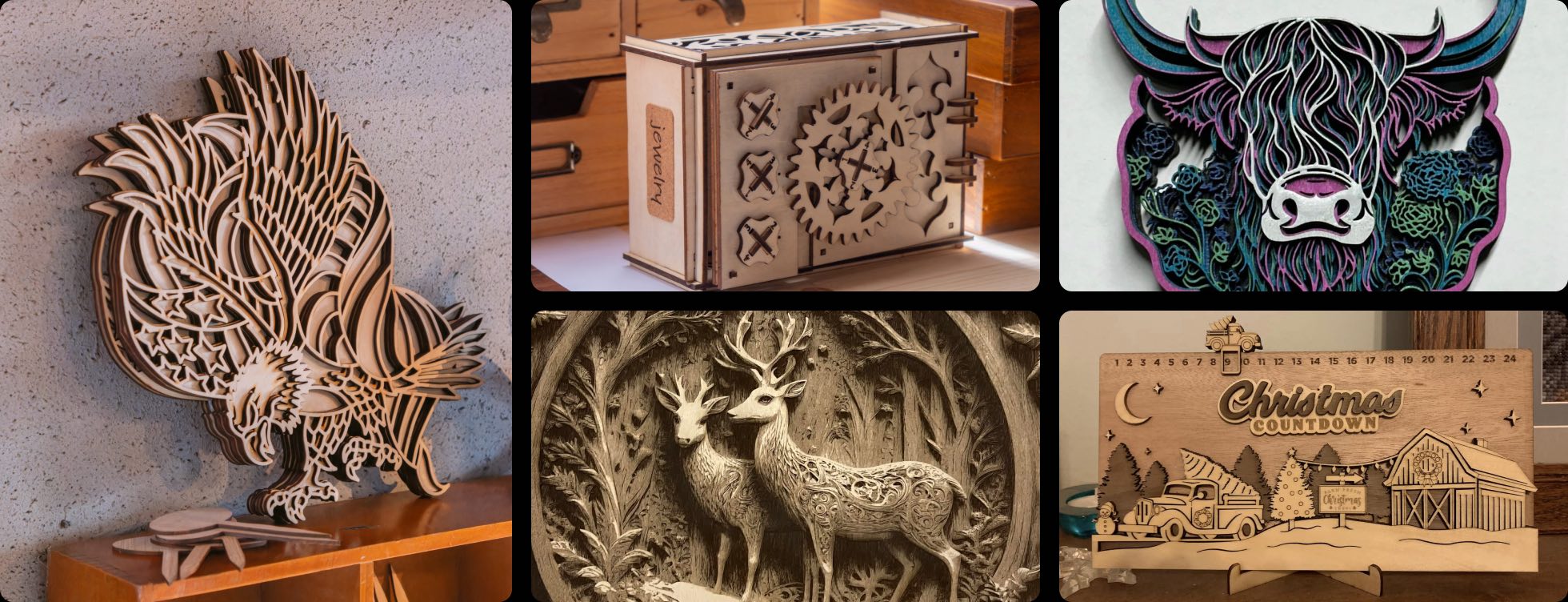Art That Sells: 7 Types of Best-Selling Art

Most artists use their artwork as a form of creative expression. However, there are artists who are keen on making some profit in the industry. But before you make any gains, you need to know the types of art that sells!
In this guide, you will discover the top 7 types of best-selling art.
Laser Cut Art
Laser cutting can be used to transform sheets of material into eye-catching, intricate designs. It works on a wide range of materials like wood, leather, acrylic, paper, fabric, and more.
Unlike traditional methods of artmaking, laser cutting machines offer unmatched precision. A good example of where laser machines’ precision comes into play is in the layered arrangements you see in wooden art.

Laser cut art goes beyond visually appealing artworks, there are also functional arts in this category — and these can be in the form of home decor items, jewelry, and fashion accessories. Imagine having a lampshade adorned with sleek geometric patterns — that will make a perfect blend of utility and beauty.
Laser-cut art is a good fit for DIYers who want to break into the art business. By opting for affordable desktop laser cutters, hobbyists get to express their creativity and bring their art ideas to life.
Laser Engraved Art
The popularity of laser engraved art has grown over the years. Like laser cutting, laser engraving can work on various materials. Imagine engraving your painting on canvas, unique signature on cutting boards, dates on wedding gifts, or unique signs on jewelry. The visual appeal and tactile features of these artworks are great.
Printmaking
Printmaking is considered one of the best-selling art in the world. Unlike sculptures or paintings, prints are more accessible to a broader audience.
Printmaking forms like screen printing can be used in producing different styles and tastes of art. It can also be used in recreating prints that are in open editions or limited editions.
Prints can be used in functional objects like wrapping paper or cards. It can also be showcased as traditional artwork, and inserted into mixed media art. The versatility that comes with prints makes them hot-selling art.
Fiber Art

image source: freepik
Fiber art has gained some popularity over the years, and there is a dedicated market for this type of art. It can be traced to multiple cultures across the globe. Its rich and deep heritage gives it meaning and depth — and that resonates with people who appreciate such unique artistic expressions.
They also give immense sensory experience and tactility. The materials, textures, knotted threads, dimension of woven fabrics, and felted design engage several senses.
Ceramics
Ceramics is undeniably captivating, and it attracts both casual observers and art enthusiasts. Ceramic art elevates everyday objects into artistic expressions, and that adds visual appeal and personality to the living spaces. Ceramic art like mugs and painted plates add some color to the spaces they're found in.

image source: freepik
Ceramic art is a diverse world, and there's something for anyone regardless of what your budget is. Whether you're looking for rustic stoneware mugs or vibrant glazes, there's something that suits your budget, and buyers don't have to break the bank.
Street Art
Street art is an art form that can command high prices at auctions. These artworks are displayed in public places and are accessible to everyone. Street art is usually used to tackle social issues, critique cultural practices, reflect on relevant concerns, and offer political commentary. Since street art sparks societal discourse, it tends to attract diverse viewers who will look beyond the aesthetics.
There are multiple materials and techniques used for the production of street art. These could range from simple classic spray painting to multimedia installations.
Mixed Media
Mixed media involves a unique combination of objects, textiles, and paint to create some sleek artwork. It's not a regular artwork that's always made of a primary material with some add-ons. And the thorough blend of these various materials creates some tactile and visual appeal. Imagine getting a mixed media that's made of delicate fabrics intertwined with smooth glass and rough stones — that will create some dynamic experiences for the buyer.


